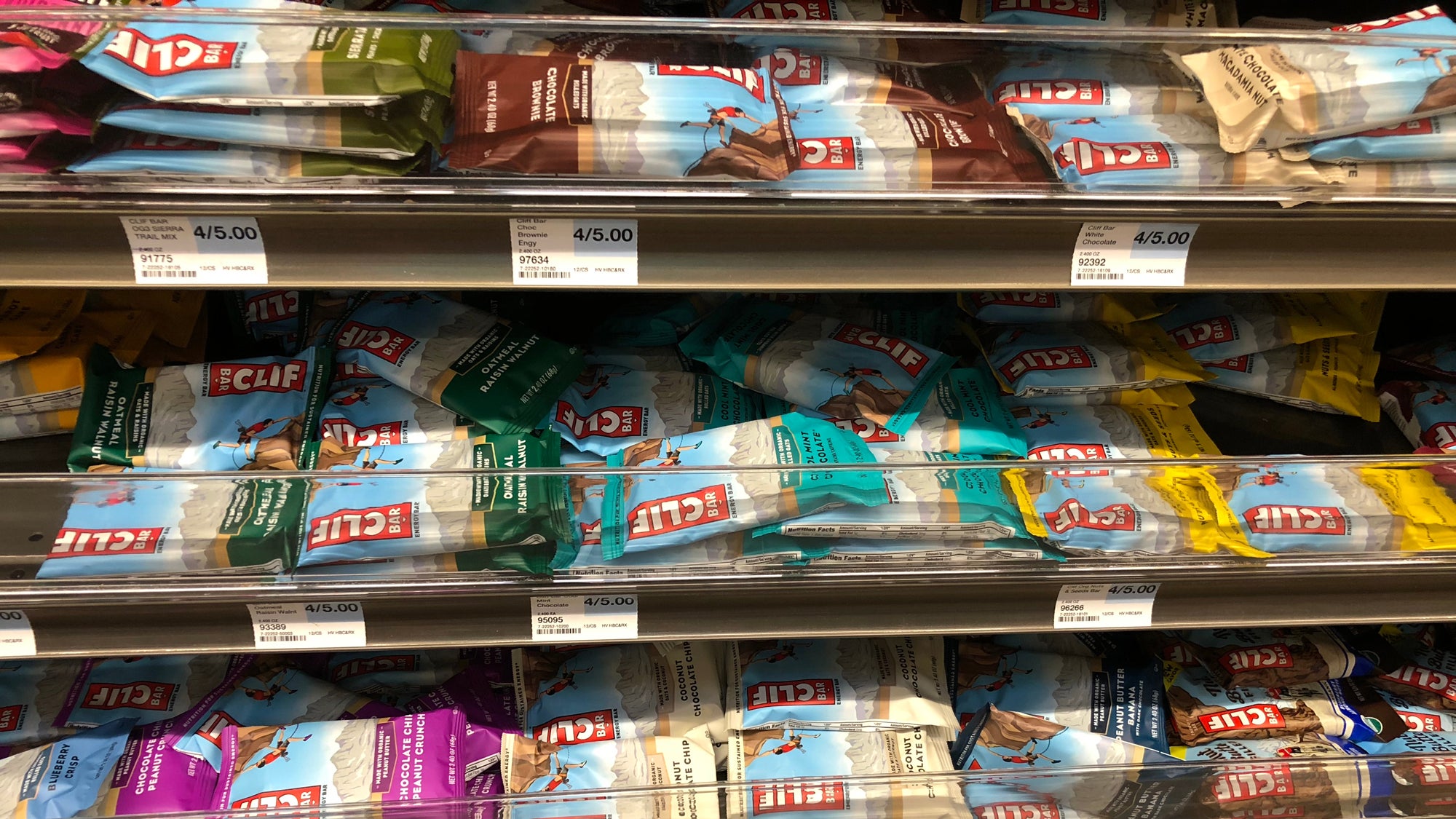The Clif Bar v. KIND Bar Brawl is Heating Up

On March 6, 2019, a company walked into a bar (fight). Clif Bar, the family and employee-owned company started by Gary Erickson and Kit Crawford, ran a full-page ad in the New York Times challenging KIND Bar to get on-board the organic train. Right now, Clif sources 76 percent of its ingredients from organic growers and it’s trying to move to 100 percent. On the same day, the company also published an open letter to KIND, offering to help kick-off their organic switch by donating 10 tons or organic ingredients.
Now, KIND is responding well, not so kindly. A new ad campaign is taking Clif to bar(re) class, and making it feel the burn. The campaign schools Clif on its bar’s high sugar content, and goes after other high-sugar bars, like RX Bars, too.
“Just because something is organic doesn’t mean that it’s healthy. Organic products can still be loaded with sugar or other harmful ingredients,” says Keri Glassman, RD, who works for KIND. She adds, “Clif has more sugar than many snack and energy bars out there.”
A survey of Clif’s staple bars—you know, the oat-based ones the brand is built off of—shows they tend to have around 20-23 grams of sugar per bar, and often list brown rice syrup as the first or second ingredient. A regular Snickers bar has 20 grams of sugar. However, that’s by design, says Drew McGowan, a spokesperson for Clif. “To compare a snack—like KIND—to an energy bar—like CLIF—is like comparing apples to oranges. Clif Bar’s purpose is to sustain energy for activity with nutritious, wholesome and organic ingredients like oats. When sugar is used, it’s to provide taste and energy—we look to match the amount of sugar to the amount of energy you need.”
However, Glassman feels like even athletes shouldn’t be sucking down sugar like hummingbirds. “If you’re an athlete or super active, sugar may not affect your weight, but it will still affect your body and health. For example, a diet high in sugar will increase inflammation,” she says. And, well, who amongst us hasn’t jammed an energy bar into our bag as an emergency plane or office snack—two very sedentary activities that definitely don’t require 23 grams of quickly available glucose? In fact, a 2013 analysis of the bar industry by Package Facts found that “walkers” constituted the largest and most attractive target market for bar makers. Technically hiking the AT is walking, but something tells us this isn’t the largest group of bar buyers in the U.S.
One thing is clear: Both brands have decided to market themselves by tapping into consumer concerns about what constitutes “good food.” They’re just doing it from two different vantage points. According to a 2016 Pew Research Center survey, most Americans believe organic food—which is produced using no synthetic chemicals—is more nutritious than conventionally grown food. Meanwhile, a 2018 survey done by the Wall Street Journal and NBC News found that Americans are more afraid of sugar than they are of marijuana (just wait until they hear about edibles!) We, as a country, have a lot of anxiety about food—and choosing a side is one way to build a brand.
It’s hard to know which company will win this bar brawl. KIND is bigger. Clif started this—and picking a fight as a PR stunt is never a great look. But Clif is a beloved member of the outdoor and endurance sports community, and it does a ton of good work sponsoring races and athletes. Clif’s advocacy for better, more sustainable agriculture is worth celebrating, too—and we should absolutely be pushing all of our favorite brands to source in environmentally friendly ways. KIND, meanwhile, runs a foundation that tries to build kindness and empathy in communities—another worthy mission.
KIND’s CEO Lubetzky sidestepped a question about whether the company was considering moving towards organic ingredients, instead emailing over a statement about the importance of whole food ingredients.
TL;DR? Who knows whether Clif’s ad will have its intended target—though it certainly is generating media attention from journalists who froth at the mouth for a good feud story—like, uh, us.
Honestly, we couldn’t care less about which bar you choose, so long as you use it to fuel for something epic. So while these two duke it out, we’ll be at our personal favorite bar—the one you belly up to. Won’t you join us? The first round of low-sugar cocktails and organic beer is on us.